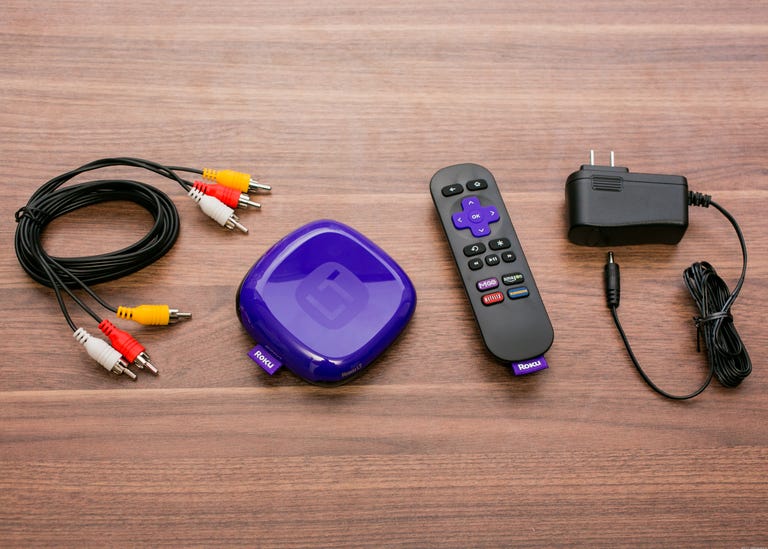 Why You Can Trust CNET
Why You Can Trust CNET Roku LT (2013) review: The best budget streaming-video box
The Roku LT is the best budget streaming-media device, easily topping the $35 Chromecast.
Editors' note (March 4, 2014): Roku has announced a new $50 Streaming Stick that essentially replaces the Roku LT reviewed here. The Streaming Stick will hit stores in April; the Roku LT will begin to be phased out soon.
The Good
The Bad
The Bottom Line
Before Google's $35 Chromecast, the Roku LT was the original impossibly priced streamer that seemed too good to be true, offering up tons of streaming content in a tiny box for just $50.
The Roku LT hasn't changed much since its introduction in 2011 as Roku's online-only budget box. You get the full Roku experience, now up to 1,000 channels, including Netflix, Amazon Instant, HBO Go, Hulu Plus, Pandora, MLB.TV, Amazon Cloud Player, and Vudu. There's still no YouTube app, although there are some decent workarounds. The Roku LT's video output is limited to 720p, but only the most picky viewers will notice much of a difference.
The box's exterior changed this fall, keeping its quirky purple look, but matching the sleek design of Roku's other streamers. The LT doesn't have the neat remote with a headphone jack found on the Roku 2 and Roku 3, but its simple clicker is still a good one, with convenient direct access buttons for services like Netflix and Amazon Instant. (And a Blockbuster button nobody but Blockbuster executives were asking for.)
For most buyers, the Roku LT is still a better value than the Chromecast. It's only $15 more, but offers up much more content; the Chromecast is still limited to Netflix, YouTube, Hulu Plus, Pandora, and Google's media apps. And the Roku LT's onscreen interface means you don't need a smartphone or tablet to control it.
If you're buying a streaming box for your primary TV, I still recommend spending extra for the Roku 3. Yes, it's twice as much, but it's still relatively affordable and its improvements -- especially its speed and the headphone-jack-toting remote -- make it worth it for a device you're likely to use frequently. But if you're looking for a streamer in a secondary location, like a bedroom or basement, the Roku LT is a fantastic option and an unbeatable value.
720p image quality: Does it matter?
If you're a techie, the Roku LT's 720p output may strike you as frustratingly backward; it's rare to see any device sport anything less than 1080p these days. But as annoying as that outdated spec may seem, the real-world difference is surprisingly minor.
I compared the Roku LT with the Roku 3, flipping between two similarly calibrated inputs on the Sharp PRO-60X5FD. I primarily used the excellent-looking "Sherlock" as my reference material, and the difference was subtle at best. If I had to describe the differences, I'd say the Roku 3's image was ever-so-slightly sharper and the colors just a tad richer, but my overwhelming opinion was the two images looked nearly identical. The bottom line is the Roku LT's image quality looks excellent, and I'd say the vast majority of buyers wouldn't be able to tell there's anything "downgraded" about the experience.
However, if you're a videophile who won't be able to shake the notion that you're not getting the full 1080p experience, there's little reason not to spend an extra $10 for the 1080p-friendly Roku 1 to put those worries out of mind.
Chromecast vs. Roku LT
Google's Chromecast made a splash when it was introduced for $35, but most buyers will be better off spending the extra $15 for the Roku LT.
There are undoubtedly some areas where the Chromecast wins. It's even smaller than the Roku LT and its "stick" form factor means you can completely hide it behind your TV. The YouTube experience on the Chromecast is also flat-out fun, especially if you have multiple people contributing to a "party" playlist. (That's a particularly sore spot for Roku, which still lacks a YouTube app, although there are some decent workarounds.) And if you buy and rent content in Google's media ecosystem, the Chromecast is the best device to watch that content on your TV. (There's also screen-mirroring on the Chromecast, but in my experience it doesn't work all that well.)
But on nearly every other count, the Roku LT wins. It offers 1,000 channels, and while many of those are filler, there are a lot of great services the Chromecast is missing: Amazon Instant, HBO Go, MLB.TV, Spotify, PBS, to name a few. Roku's killer cross-platform search feature is another plus, making it easy to see where a particular movie or TV show is available.
The Roku LT's true onscreen interface also means you don't need a smartphone or tablet to browse content, which I find is better when you're kicking back to watch TV. In general, real buttons tend to beat virtual ones when it comes to the TV experience, especially if everyone in your household doesn't have a smartphone or tablet.
All that adds up to make the Roku LT well worth the extra $15, unless you're heavily invested in the Google media ecosystem.
Roku boxes compared
For a deep dive on the full Roku experience, check out CNET's full review of the Roku 3. Below is a breakdown of Roku's full product line.
Roku LT ($50): 720p video, HDMI and analog video outputs, available only at online retailers
Roku 1 ($60): adds 1080p video
Roku 2 ($80): adds Wi-Fi Direct remote with headphone jack, dual-band Wi-Fi
Roku 3 ($100): adds dual-core processor, motion control remote, Ethernet jack, USB port, SD card slot; no analog video jacks


